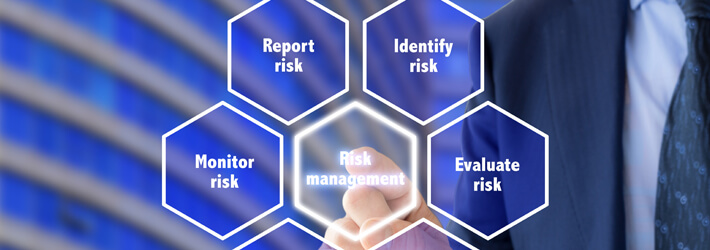
A risk management framework (RMF) is a set of guidelines developed by the National Institute of Standards and Technology (NIST), which provides a structured process that integrates information security, privacy, and risk management activities into the system development life-cycle.
While the RMF was originally designed for United States federal agencies to help them comply with regulations such as the Privacy Act of 1974, the Federal Information Security Modernization Act of 2014 (FISMA), and so on, it has since been expanded to cover a broader range of entities, including entities in the private sector.
Benefits of a Risk Management Framework
One way or another, even if you choose not to follow the NIST guideline for managing risks, you will need to implement some kind of risk management strategy in order to keep your systems and data secure. To be more precise, implementing a risk management strategy will help you evaluate the priority of each of the threats your organization is exposed to, thus helping you focus on the most pressing issues and allocate resources more effectively.
An RMF will provide you with standardized and harmonized risk management protocols which can be communicated to all members of staff, to ensure that everybody is operating according to the same set of guidelines. An RMF will also help organizations establish effective access controls to prevent unauthorized access to privileged accounts and sensitive data.
The NIST risk management framework is designed to be flexible, repeatable, and measurable, and can be adapted to suit any organization, new or old, big or small.
Risk Management Framework Components
A risk management framework consists of several core components, which will help organizations manage their risks and monitor the effectiveness of their privacy/security program. These components include;
- Risk identification: Organizations must create an extensive list of all possible threats to their systems and data, regardless of where those threats originate. This includes any areas where the organization may find itself falling out of alignment with the relevant data privacy laws.
- Risk assessment: For each risk identified by the process mentioned above, organizations will need to create a detailed risk profile, and assign a score to each risk based on their potential impact. Risk assessments should be carried out at regular intervals.
- Risk mitigation: Once a thorough risk assessment has been carried out, organizations will need to establish a plan for mitigating these risks, which will be prioritized based on their risk score.
- Reporting and monitoring: Organizations must periodically review their risk identification, assessment, and mitigation strategies to ensure that they are effective, and produce reports that highlight any areas that need improvement.
- Risk governance: Implement all of the risk management steps defined above.
Risk Management Framework Steps
The NIST RMF framework is broken into 7 steps, which include;
- Prepare: Organizations should take the necessary measures to effectively prepare for any threats to the security of their systems and data.
- Categorize information systems: Organizations must ensure that they know exactly what systems and data they need to safeguard and carry out a detailed analysis of the impact associated with a breach affecting those systems and data.
- Select security controls: Organizations will need to identify which security controls are necessary to protect their systems and data.
- Implement security controls: Implement the security controls identified in the previous step, and ensure that all controls are clearly documented.
- Assess security controls: Determine whether the security controls have been properly implemented, and achieve their goal of mitigating risks.
- Authorize information systems: Any systems that are functioning properly and effectively minimizing risk should be officially authorized.
- Monitor security controls: Continuously monitor the effectiveness of the security controls in place, and make changes where necessary. Ensure that all changes are well documented, and all-important changes should trigger an alert that can be scrutinized to ensure they are carried out by an authorized member of staff.
If you’d like to see how the Lepide Data Security Platform can help you assess the risks to your sensitive data, schedule a risk assessment today.

 Important Group Policy Settings & Best Practices to Prevent Security Breaches
Important Group Policy Settings & Best Practices to Prevent Security Breaches 15 Most Common Cyber Attack Types and How to Prevent Them
15 Most Common Cyber Attack Types and How to Prevent Them Why Active Directory Account Getting Locked Out Frequently – Causes
Why Active Directory Account Getting Locked Out Frequently – Causes
